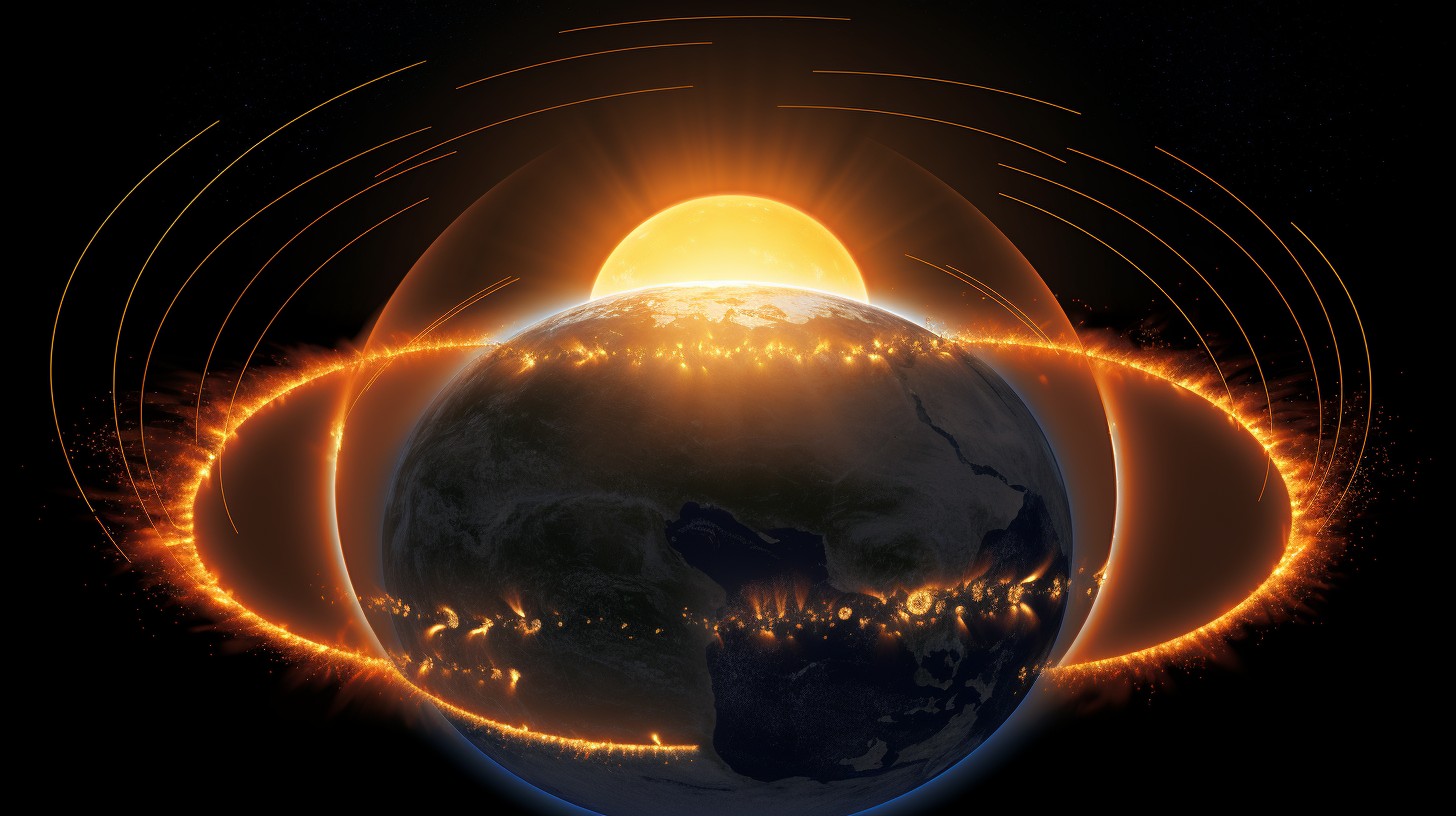
Solar Eclipse Effects on Earth’s Weather
On Saturday, a captivating celestial event will grace the skies as a ring of fire annular solar eclipse takes place. While many will eagerly watch the eclipse, few may realize that this celestial phenomenon will also have tangible impacts on Earth’s weather.
Temperature Variations
The moon’s passage in front of the sun during a solar eclipse causes fluctuations in temperature, wind speed, and humidity at the Earth’s surface. The extent of these weather changes depends on the percentage of sunlight blocked, akin to how shaded areas are cooler than those in direct sunlight on a hot day.
During Saturday’s annular eclipse, which will obstruct up to 90% of the sun, the impact on weather conditions will be noticeable, though not extreme. Unlike a total eclipse that entirely hides the sun, annular eclipses allow slightly more solar radiation, including sunlight and energy, to reach the Earth’s surface.
Temperature Decreases
While temperature decreases are typical during solar eclipses, the magnitude of the drop can vary based on several factors, including the time of year and cloud cover. An October annular eclipse will lead to less drastic temperature changes compared to an August total eclipse, mainly due to the sun’s lower angle in the fall, resulting in less intense sunshine.
In the August 2017 total solar eclipse, which occurred during a hot summer afternoon, temperatures in various locations along the path of totality dropped significantly. For instance, Douglas, Wyoming, experienced an 11-degree temperature reduction in just one hour, while temperature decreases of 4 to 8 degrees were widespread across the South.
For Saturday’s eclipse, the temperature drop is not expected to be as pronounced but could still lead to a slight decrease in temperatures along the path of annularity. Areas witnessing only a partial eclipse might experience a slower temperature rise from late morning to early afternoon, which would leave the day slightly cooler than it would be without the eclipse.
Impact Beyond Temperature
The eclipse’s effects go beyond temperature changes. The abrupt cooling during an eclipse briefly reduces the heat stored in the atmosphere, making it more stable. Heat forces air to rise, leading to atmospheric instability that creates clouds, storms, and wind as the atmosphere seeks to regain equilibrium.
As the eclipse cools the air, the atmosphere becomes calmer, and wind speeds decrease. During the 2017 total solar eclipse, weather measurements revealed that wind speeds dropped by an average of 6 mph.
Conclusion
The relationship between humidity and temperature is close. When the air temperature and dew point (measuring air moisture) approach the same temperature during an eclipse-induced dip, humidity increases, creating a more humid feeling.
Significant temperature reductions can also impact cloud cover. In 2017, clouds over parts of South Carolina dissipated during the total solar eclipse because they lost the heat needed to drive air upward and form clouds. In Saturday’s eclipse, there is potential for some cloud dissipation, even with less drastic temperature drops.
In essence, a solar eclipse is not just a visual spectacle. It’s a brief but fascinating interplay of celestial events that impact the Earth’s weather, from temperature to wind, humidity, and cloud formation.
